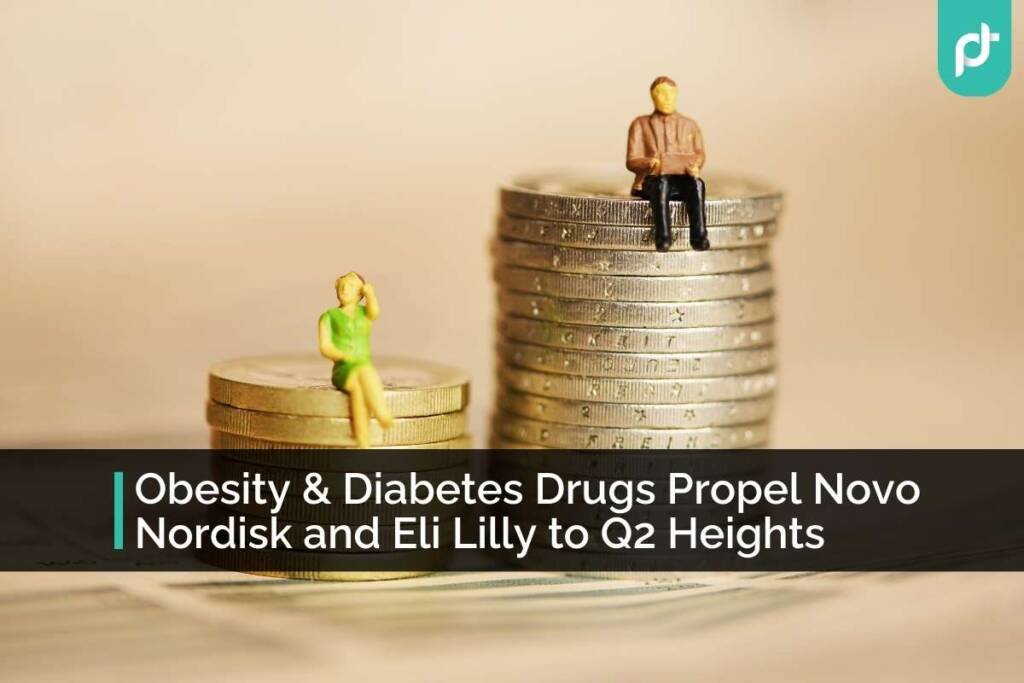As the COVID-19 pandemic surged and waned, the biopharmaceutical industry witnessed a rollercoaster ride of revenue spikes and troughs. However, a sense of stability seems to be returning to pharma sales, with the exception of those manufacturers delving into next-generation treatments for obesity and diabetes. Amid the release of second-quarter financial results, the spotlight shines on the remarkable revenue leaps achieved by Novo Nordisk and Eli Lilly.
Within the top 20 revenue-generating firms during this period, Novo and Lilly emerged as the frontrunners, boasting remarkable year-over-year revenue growth rates of 32% and 28%, respectively. This impressive achievement starkly contrasted with the single-digit growth of other companies, with none exceeding an 11% increase.
The driving force behind Novo’s revenue surge is Ozempic, a diabetes drug that has found off-label use in obesity treatment. Ozempic’s revenue skyrocketed from $2.1 billion to $3.2 billion. Moreover, Novo’s obesity treatments, Wegovy and Saxenda, together achieved a staggering $1.6 billion in sales, a tripling of their combined figures.
Nonetheless, despite the considerable increase, Novo’s total sales of $7.9 billion fell short of the anticipated $8.4 billion, as indicated by Zacks Investment Research. The company foresees ongoing challenges in meeting demand, prompting it to restrict Wegovy supplies until 2024.
In the case of Eli Lilly, their diabetes drug Mounjaro, approved midway through Q2 2022, bolstered their financials with $980 million in sales. The drug experienced a 72% surge compared to Q1 2023, reflecting significant demand and growth potential. Additionally, the promising Mounjaro is on track for a lucrative obesity approval in the near future.
Lilly’s revenue climb was further supported by the robust sales of breast cancer drug Verzenio, which saw a 57% boost to $927 million. Diabetes and heart therapy Jardiance also contributed, with sales soaring 45% to $668 million.
The growth story continues in the market cap rankings, with Lilly’s ascent to the top spot at over $500 billion, surpassing longtime leader Johnson & Johnson ($452 billion). Similarly, Novo ($411 billion) has surged to the third position.
Yet, not all companies experienced upward trends. A select few within the top 20 saw single-digit revenue declines, with Pfizer facing a substantial 54% decrease due to the influence of COVID-related product sales. Excluding COVID-related products, Pfizer managed a 5% sales increase.
BioNTech (-95%) and Moderna (-93%), both once prominent top 20 revenue contenders, faced significant slides in their revenue figures due to changes in the COVID landscape.
Looking ahead, the transformation to a commercial model for COVID vaccines in the U.S. raises curiosity about the second half of 2023’s performance. Moderna forecasts a broad revenue window of $6 billion to $8 billion, after achieving $2.2 billion in sales in H1.
The second quarter also witnessed various companies making strides in revenue growth. Regeneron, Takeda, Novartis, AstraZeneca, J&J, Amgen, Gilead Sciences, and Teva each recorded gains ranging from 4% to 11%. Novartis even raised its 2023 revenue projection for the second time this year, driven by the success of key drugs.
Amid this intricate dance of revenue changes, the pharmaceutical industry’s ability to adapt to shifting demands and the emergence of novel therapies remains crucial for sustained growth.





























